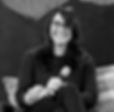Trailblazing Queer Indigenous Leaders
- WE CREATE SPACE
- Aug 9, 2022
- 3 min read
Updated: Jan 12, 2023
In celebration of International Day of the World’s Indigenous People, we wanted to spotlight some real queer trailblazers doing incredible work within and for their communities.

N.B. - On this day in particular, it's worth noting that not all native or First Nation people resonate with the word ‘indigenous’ because of how it centers colonisation in defining their identity. It’s important to refer to people whenever possible using the name of the specific tribe or cultural group that they belong to, rather than using a blanket term.
1. Sharice Davids (she/her)

Sharice Davids is part of the Ho-Chunk community. She is the first "out" LGBTQ Congress member from Kansas, and is also one of the first two Indigenous women in US Congress. As a politician, Davids is a strong advocate for mental health, LGBTQ rights, women's rights, BIPOC rights, and climate change.
2. Raykeea Angel Wilson (they/them)

Raykeea Wilson is a musician from Detroit with Cherokee heritage, who has taught themselves Cherokee language. They identify as agender and pansexual. Their music touches upon LGBTQ rights, body image, and Indigenous rights. They are extremely proud of their multiracial heritage (their late father was African American).
3. Sydney Freeland (she/her)

Sydney Freeland is a trans, Navajo filmmaker. She is writing and directing stories, and increasing the representation of Native American families on screen. She wrote and directed the short film Hoverboard and the feature-length Drunktown's Finest, which garnered numerous positive reviews after premiering at the Sundance Film Festival. Her second film, Deidra and Laney Rob a Train debuted at Sundance and was released on Netflix in 2017.
4. Jenny Miller (she/they)

Jenny Miller is an artist and Inupiaq (a native inhabitant of Alaska). While primarily a photographer, she also creates video, sound and sculpture works. Much of her art focuses on LGBTQ+ and Two-Spirit people, as she immerses herself in Inupaiq queer community.
5. Barbara May Cameron (she/her)

In 1975, Barbara May Cameron co-founded Gay American Indians (GAI) alongside her friend Randy Burns. Cameron viewed GAI as both a support group for Native lesbians and gay men, and a means to carve out space for them within the wider (and whiter) LGBTQ+ community. Although originally a photographer, her messages found traction through written essays - her words became a mouthpiece for the gay indigenous community. Cameron’s 1981 essay “Gee, You Don’t Seem Like An Indian From The Reservation”
remains a searing snapshot of the struggle to survive marginalisation and thrive despite it.
6. Sherenté Mishitashin Harris (he/she/they)

Sherenté Mishitashin Harris is an activist, dancer and cultural educator. They initially danced in the tradition of their father, a war dancer. After coming out as Two Spirit, they spent one year learning how to dance Fancy Shawl, a modern dance traditionally led by women, created during the women’s rights movement.
7. Aretha Brown (she/her)

Aretha Brown is an artist, activist, comedian and screenwriter of Gumbaynggirr descent, currently living in London. Aretha takes heavy influence Melbourne's Western Suburbs where she grew up, as a queer person with indigineous heritage. She is also the founder of **KISS MY ART, an art collective for women and non-binary people.
8. Kiley May (she/they)

Kiley May is a Mohawk and Cayuga from Six Nations of the Grand River Territory. May is a two spirit individual who also identifies as trans, queer and genderqueer. They are a leader in the Two-Spirit community, as well is an actor, model, photographer, educator, writer.
9. Storme Webber (she/her)

Storme Webber is a Two-Spirit Alutiiq, Black, Choctaw poet and playwright who creates blues-influenced texts exploring identity, race, class, and gender. Her poetry collections include Diaspora and Blues Divine. She has been featured in multiple anthologies and documentaries, including What’s Wrong with Gays These Days? and Living Two Spirit.
10. Chrystos (she/her)

Chrystos is a Two-Spirit poet, artist and activist of Menominee descent. She has published many books of poems. As a lesbian with indigenous roots, in her writing, she aims to empower Native Americans to connect with their heritage and culture to break down stereotypes and expose intersectional issues that affect her community.
